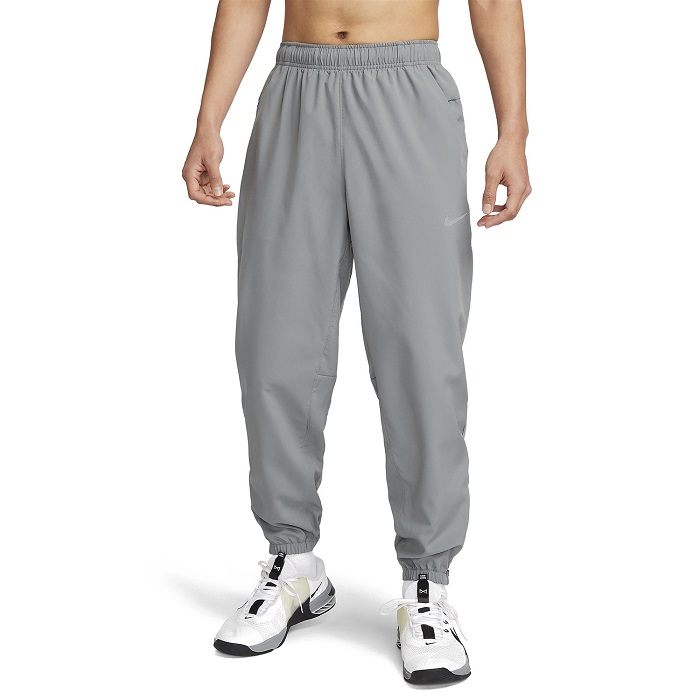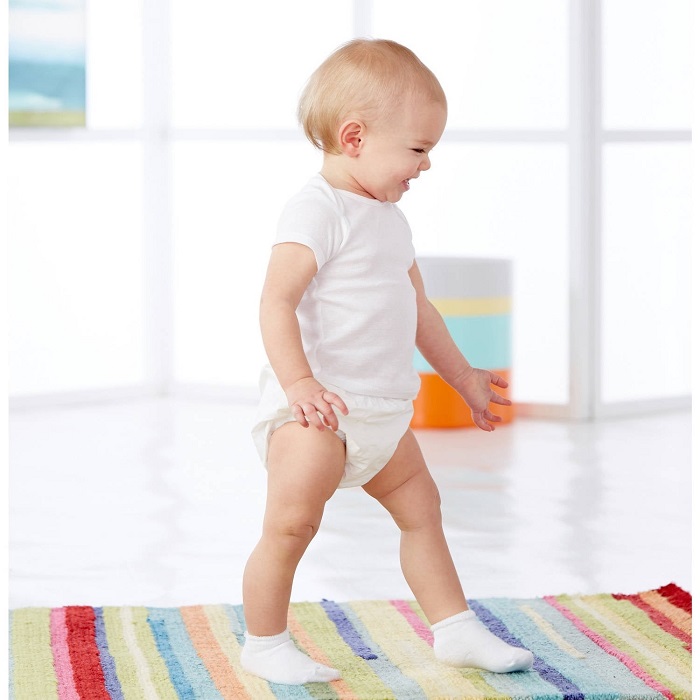Introduction to Toilet Training Pants
Toilet training pants are a key step in a child’s journey towards independence. Unlike regular diapers, these pants ease the transition for toddlers who are mastering the use of the toilet. They are less absorbent, which helps toddlers feel wetness and recognize the need to go to the bathroom. Designed for little learners, toilet training pants promote self-awareness and foster the confidence to make the switch from diapers.
Toilet training pants come in various styles and sizes to fit all toddlers. They allow more freedom of movement than traditional diapers and often feature fun designs that appeal to kids. With safety features like tear-away sides, they make it easy for parents and caregivers to manage accidents quickly. Moreover, they are reusable or disposable, making them a versatile choice for on-the-go potty training.
Choosing to use toilet training pants is a significant milestone. It signals that both you and your child are ready to work on this new skill together. As such, selecting the right pair of training pants is crucial for a seamless transition. This piece of the potty training puzzle should not be overlooked, as it can affect your child’s comfort and willingness to cooperate in the process. Therefore, incorporating toilet training pants can truly make a difference in your child’s potty training success.
The Benefits of Using Training Pants
The journey to toilet training is a big step for toddlers and parents alike. Using training pants provides numerous advantages that support this crucial developmental stage. Here are some key benefits:
Encourages Independence
Training pants are designed to be pulled up and down easily. This design lets toddlers practice using the toilet on their own. They start to learn the cause and effect of feeling wet when they don’t make it in time. This helps in building their self-reliance.
Promotes Awareness
Unlike diapers, training pants are less absorbent. They allow your child to feel dampness immediately after an accident. That feeling is uncomfortable but important. It prompts them to recognize the sensation of needing to go.
Builds Confidence
As toddlers grow more competent at using the toilet, their confidence blooms. Toilet training pants add to this feeling. Children feel more grown-up when they use products that resemble adult underwear.
Simplifies Clean-Ups
When accidents happen, they’re less daunting. Training pants often have features like tear-away sides. Parents can remove them quickly and easily, reducing stress for everyone involved.
Adaptable for On-the-Go Training
Durability and versatility are key features of toilet training pants. They fit into active lifestyles. Parents can rely on them during outings, confident that they can manage any mishaps with ease.
Fun Designs Motivate Toddlers
Kids love fun and colorful designs. Training pants come in various appealing patterns. These designs can motivate toddlers to wear them and to succeed in potty training.
In summary, toilet training pants pave the way for a less stressful, more engaging potty training experience. They aid in the development of essential skills needed for complete toilet independence. By choosing the right training pants, you support your child through a milestone in their growth with confidence, comfort, and a touch of fun.
How to Choose the Right Training Pants for Your Child
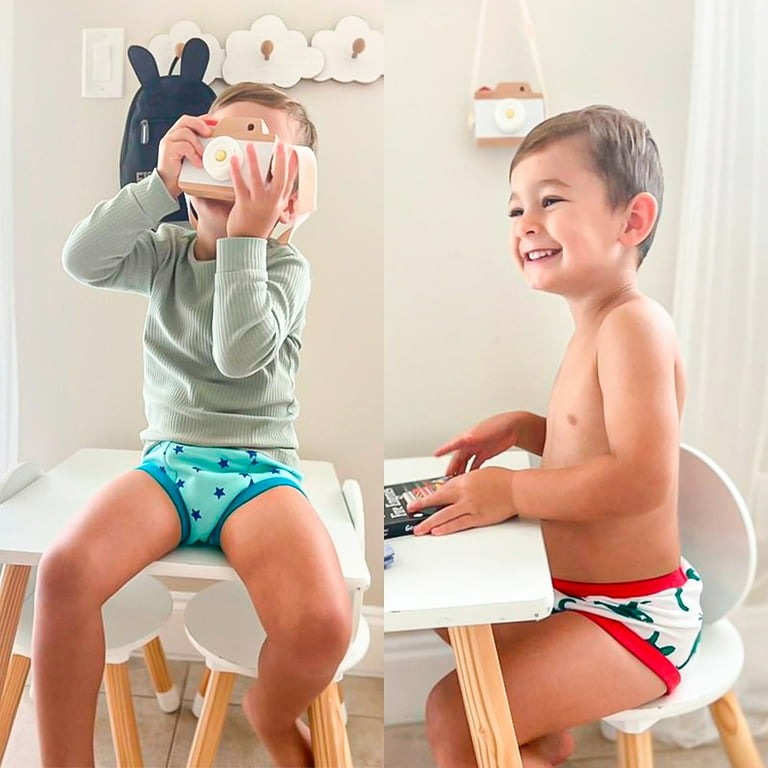
Choosing the right toilet training pants for your toddler is vital. Different children have different needs and preferences. Here are some points to consider when selecting the best option for your child:
Consider the Size and Fit
Size and fit are crucial for comfort and to prevent leaks. Look for adjustable waistbands to ensure a snug fit. Also check for elastic leg openings that are tight enough to prevent leaks but not too constricting.
Opt for Absorbency Levels that Suit Your Child’s Needs
Some toddlers might need more absorbency than others, especially at night. Choose training pants with the right level of absorbency for your child’s stage in the potty training process.
Look for User-Friendly Features
Go for pants with tear-away sides or pull-up styles that are easy to put on and take off. This supports your child’s growing independence.
Pick Designs that Appeal to Your Toddler
Fun and colorful designs can excite your child about wearing them. Let them pick out a design they love to encourage their cooperation.
Evaluate the Type: Reusable vs. Disposable
Consider your lifestyle when choosing between reusable and disposable. Reusable pants are eco-friendly and cost-effective in the long run. Disposable ones are convenient for travels or situations with limited access to laundry.
Test for Comfort and Skin Sensitivity
Ensure the material is soft and breathable to avoid irritation. If your child has sensitive skin, look for hypoallergenic options.
By paying attention to these factors, you can find the perfect training pants for your child. This will help make their potty training journey a positive and encouraging experience.
When to Start Using Toilet Training Pants
Determining when to start using toilet training pants is a pivotal decision for parents. Here are several signs that suggest your child may be ready to begin this new phase:
Look for Signs of Readiness
Your child may show interest in using the potty or want to wear ‘big kid’ underwear. Notice if they stay dry for longer periods, which shows bladder control. Toddlers might also communicate the need to go or dislike wearing wet diapers.
Consider Your Child’s Comfort Level
Start when your child seems comfortable with the idea. Avoid pushing them if they resist or show fear. Comfort with the change is key to success in this transition.
Align with Other Developmental Milestones
If your child can follow simple instructions and show independence in other areas, it may be time. Walking and the ability to pull pants up and down are good indicators too.
Be Consistent with Timing
Choose a time when your family’s routine is stable. Avoid starting during stressful periods like moving homes or the arrival of a new sibling. A calm environment supports learning.
Watch for Consistency in Their Habits
Regular bowel movements at predictable times are a good sign. This regularity implies that your child may be ready for the next step.
Timing varies for every child, and there is no perfect age to start. Some may take to it before the age of two, while others might not be ready until after three. Remember, patience and positive reinforcement will go a long way in this process. By tuning into your child’s signals and readiness, you can introduce toilet training pants at the most appropriate time, easing the transition for both of you.
Tips for Successful Toilet Training with Pants
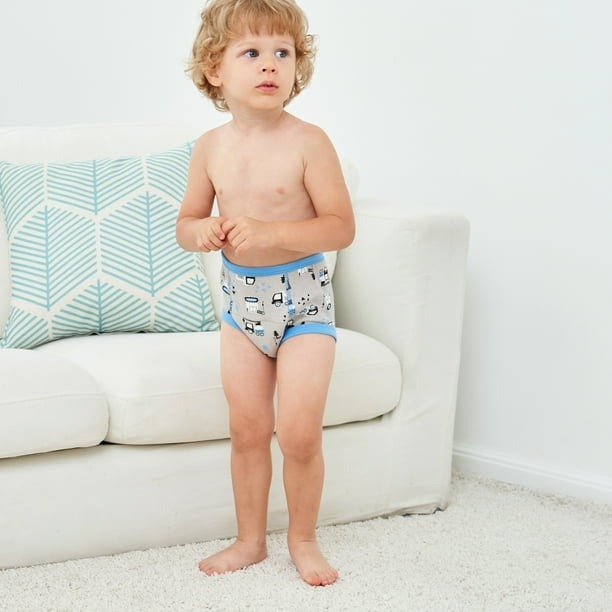
Transitioning a toddler from diapers to toilet training pants is a journey. The following tips can help ensure a smooth and successful experience:
Maintain a Positive Attitude
Always approach toilet training with a positive mindset. Cheer your child on, and avoid showing frustration.
Set a Routine
Establish a regular schedule for bathroom breaks. Consistency helps toddlers learn faster.
Offer Praise and Rewards
Celebrate successes with praise or a small treat. Positive reinforcement encourages continued effort.
Be Patient
Understand that accidents will happen. Stay calm and reassure your child when they do.
Dress for Success
Choose clothes that are easy to remove. This step cuts down on the stress of hurrying to the potty.
Use Training Pants During the Day
Start with toilet training pants in the daytime. They’re less absorbent, so your child learns to recognize the wet sensation.
Prepare for Nighttime Training
Use more absorbent training pants at night. They ensure comfort and ease concerns about bedwetting.
Foster Independence
Encourage your child to pull their pants up and down. This practice promotes self-sufficiency.
Keep the Bathroom Kid-Friendly
Ensure the potty area is accessible and inviting. A step stool or a child-sized seat can help.
Communicate Clearly
Use simple words to explain the process. Consistent language makes the training clearer.
By following these tips, you can turn toilet training into a positive experience. Celebrate each step forward, and remember that every child learns at their own pace.
Transitioning from Diapers to Training Pants
Transitioning from diapers to toilet training pants is a significant phase for toddlers. It marks a substantial leap toward self-sufficiency and requires careful planning. Here’s a step-by-step guide:
Assess Readiness
Ensure your child is ready for the change. Look for cues like discomfort in wet diapers and a regular pattern of dryness.
Start Gradually
Introduce training pants at home first. Allow your child to get used to the new feel and idea.
Explain the Process
Talk to your child about why they’re moving to training pants. Use simple, positive words to build excitement.
Choose the Right Time
Begin the transition when your home life is calm. Steer clear of hectic periods that could cause stress.
Stay Consistent
Transition fully to training pants once your child is comfortable. Avoid switching back and forth to diapers.
Be Supportive
Offer encouragement at each step. Celebrate successes to boost morale and foster willingness to continue.
Prepare for Setbacks
Keep the mood light even when accidents occur. These are normal and part of the learning process.
By handling the switch with patience and understanding, you’ll help your child embrace their new big-kid status.
Common Challenges and Solutions with Training Pants
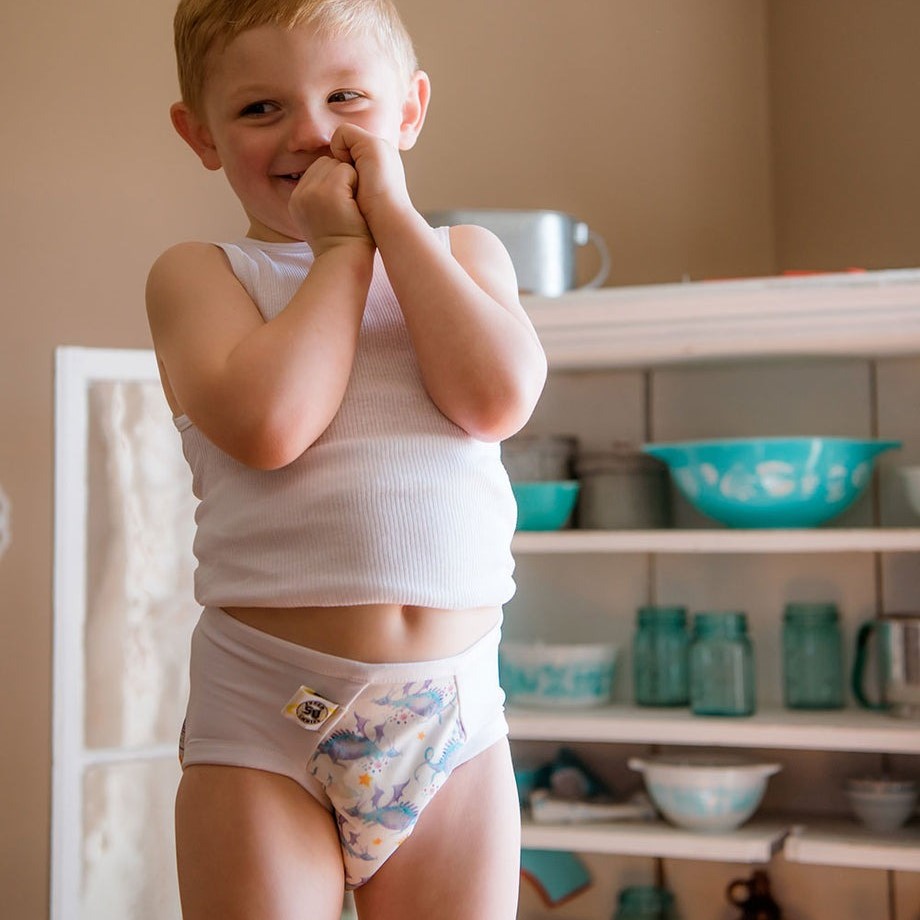
Transitioning to toilet training pants can sometimes present challenges for both toddlers and parents. Here’s how to address some common issues that may arise.
Dealing with Leaks
Leaky training pants can be frustrating for all involved. To minimize leaks:
- Ensure a proper fit with secure, snug waistbands and leg openings.
- Consider increased absorbency options for night-time or long outings.
- Encourage frequent bathroom trips to prevent overfilling the pants.
Handling Resistance
Some children may resist the change to training pants. Strategies to overcome this include:
- Allowing your child to choose their own training pants designs.
- Creating a reward system to celebrate when they wear them without fuss.
- Gradually introducing them and mixing with regular diapers until they adjust.
Managing Accidents
Accidents are inevitable, but they can be managed by:
- Keeping a positive attitude and comforting your child when mishaps occur.
- Carrying spare pants and clothes when away from home.
- Using training pants with easy-open sides for quick changes.
Nighttime Training
Nighttime can be challenging due to less control while sleeping. Tips for night training:
- Use more absorbent training pants to keep your child dry through the night.
- Limit fluid intake before bedtime to reduce the likelihood of accidents.
- Protect the bed with waterproof sheets to ease clean-up.
Washing and Care
Reusable training pants require proper care. To keep them in good condition:
- Follow the laundering instructions carefully to maintain absorbency.
- Rinse promptly after accidents to prevent staining and odors.
- Dry them completely before reuse to avoid skin irritation.
By anticipating common issues and implementing these solutions, the experience can be smoother and more rewarding. Keep in mind, patience and consistency are key during this period of learning and adjustment for your toddler.
Care and Maintenance of Training Pants
Caring for toilet training pants is crucial to ensure their effectiveness. Here’s how you can maintain them:
Choose the Right Washing Method
For reusable pants, follow the wash instructions on the label.
Use gentle detergents that won’t irritate your child’s skin.
Avoid using fabric softeners as they can reduce absorbency.
Keep Training Pants Clean
Change pants as soon as they are wet or soiled to prevent rashes.
Rinse them under cold water before washing to remove urine or feces.
For disposables, toss them out after use to maintain hygiene.
Dry Thoroughly
Air dry reusable pants if possible to preserve their shape and fit.
If you use a dryer, choose a low heat setting to avoid shrinking them.
Check that pants are completely dry to prevent skin irritation.
Store Properly
Keep a stash of training pants in an easy-to-reach place for quick changes.
Separate clean and dirty pants to avoid contamination.
Store them in a dry, cool environment to maintain their quality.
Taking care of toilet training pants properly extends their life and functionality. By following these easy steps, you ensure a comfortable and hygienic training process for your toddler.


